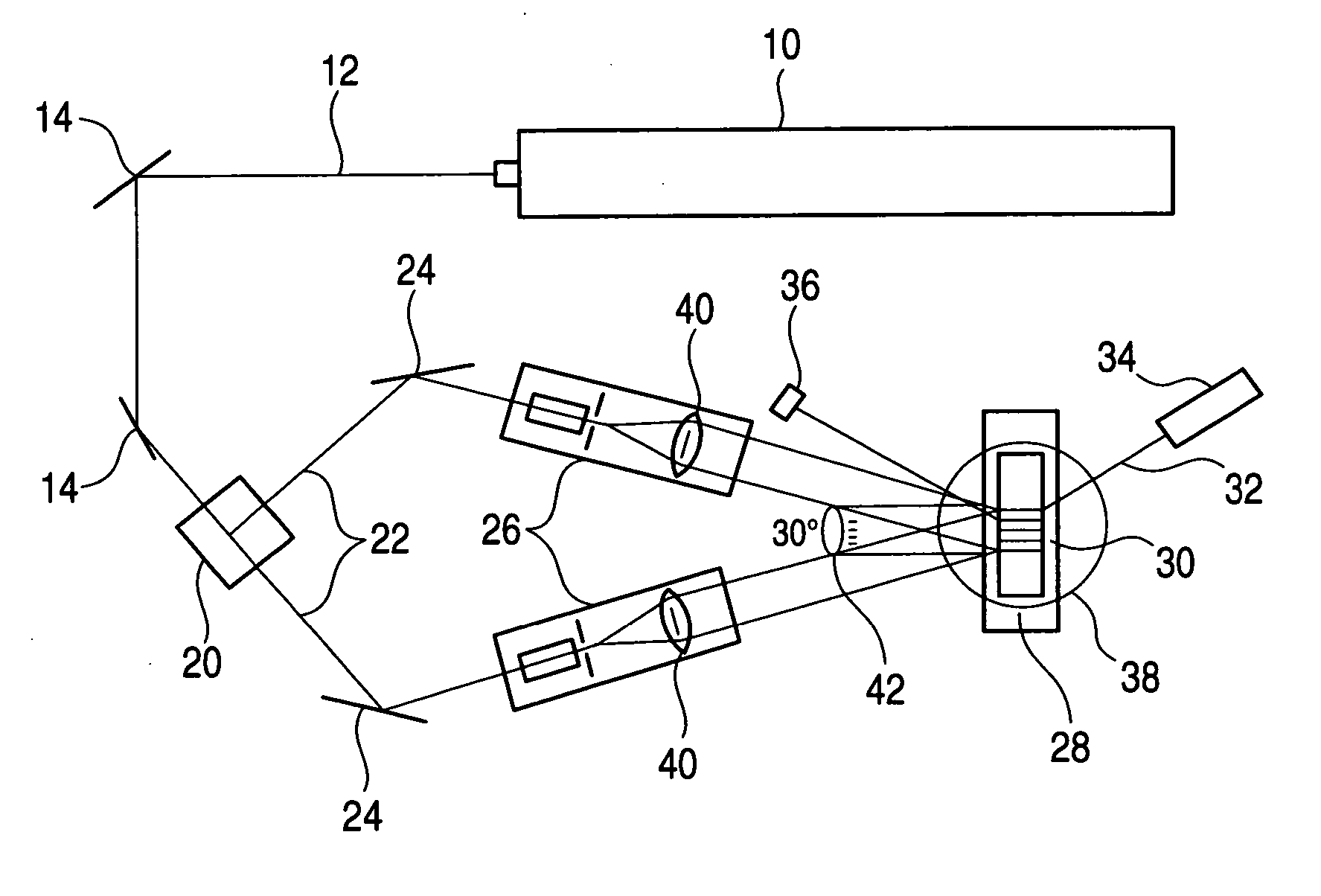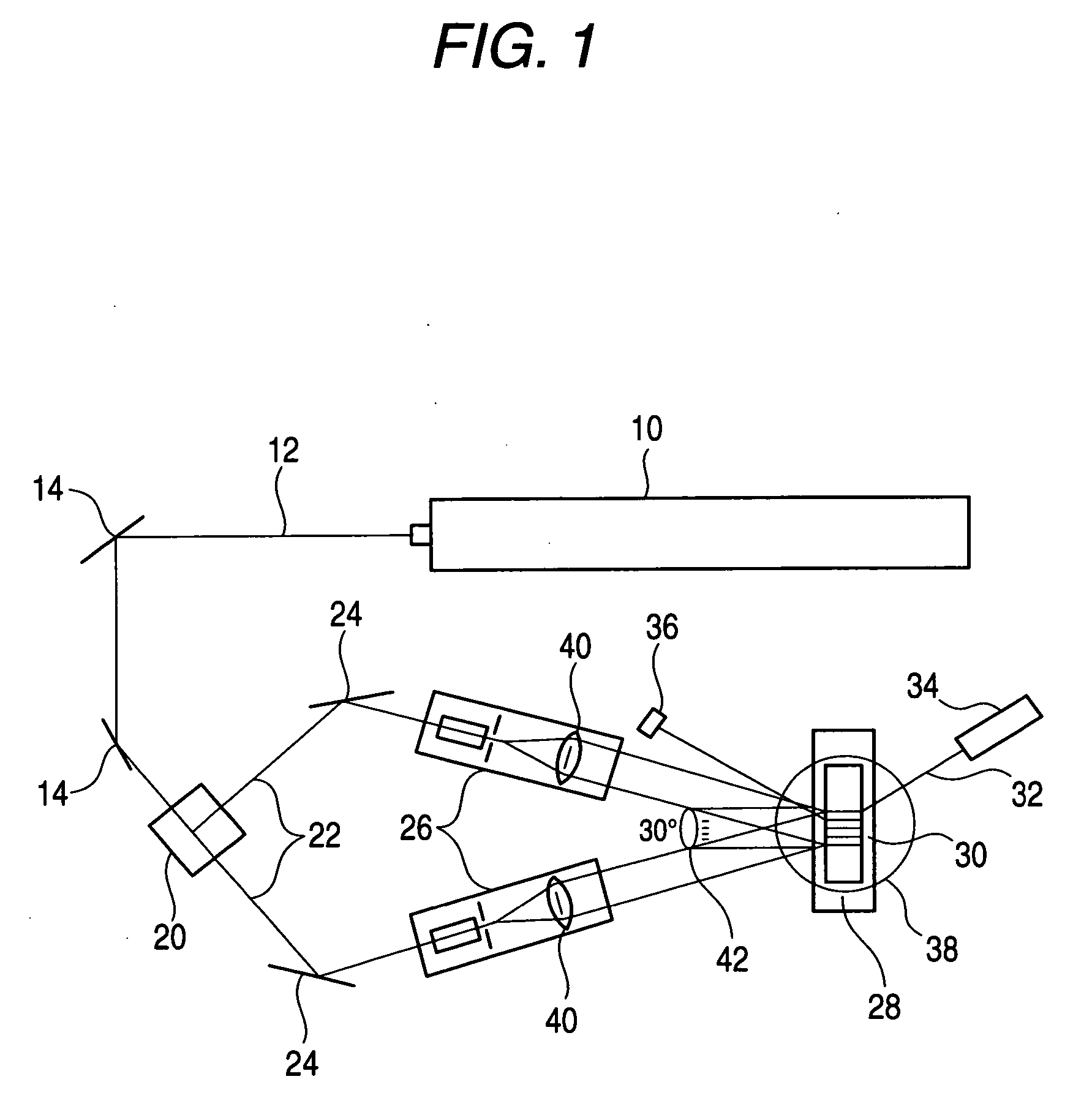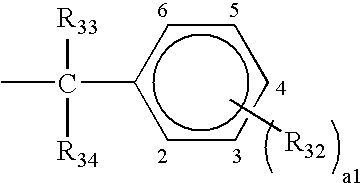Hologram recording material, hologram recording method, optical recording medium, and dye therefor
a technology of optical recording medium and hologram, which is applied in the field of hologram recording material and hologram recording method, can solve the problems of hard discs, inability to replace, and low light diffraction efficiency or reflectance of amplified holograms, and achieves high diffraction efficiency, high sensitivity, and high density
- Summary
- Abstract
- Description
- Claims
- Application Information
AI Technical Summary
Benefits of technology
Problems solved by technology
Method used
Image
Examples
example 1
(Hologram Recording Method by Polymerization Process)
[0384] As described in Example 1 of JP-A-6-43634, 1.20% by weight of a radical polymerization initiator I-2, 1.80% by weight of a chain transfer agent MBO, 46.5% by weight of POEA as a monomer and 50.5% by weight of cellulose acetate butylatc CAB 531-1 as a binder were used. A known sensitizing dye DEAW described in JP-A-6-43634, and the inventive sensitizing dyes S-1 and S-7 were then used in an amount of 0.069% by weight, 1.00% by weight and 0.54% by weight, respectively, based on the solid content of the aforementioned mixture. These amounts were calculated from the molar absorption coefficient at 532 nm of the sensitizing dye which exhibits a transmission of 50% at a hologram recording wavelength of 532 nm when the thickness thereof is 100 μm. These components were then dissolved in a triple amount of methylene chloride (optically 2-butanone and acetone as well) to prepare Comparative Sample 1 of composition for hologram rec...
example 2
(Hologram Recording Method by Color Development Method)
[0395] The sensitizing dye, electron-donating compound, interference fringe-recording component, additives and binder PMMA-EA (poly(methyl methacrylate)-5% ethyl acrylate) copolymer; Mw: 101,000) set forth in Table 2 were dissolved in a double to quadruple amount of methylene chloride (optionally acetone or acetonitrile as well) under a red light to prepare hologram recording materials 101 to 107. The term “%” as used herein is meant to indicate % by weight based on binder PMMA-EA
TABLE 2Electron-SensitizingdonatingInterference fringe-Sampledyecompoundrecording componentAdditives101S-1 2.8%A-1 42%I-5 50% + L-2 10%SO-3 8%102S-7 1.5%″″″103S-14 3.0%″″″104S-19 2.9%″″″105S-2 1.8%″PB-2 20% + DD-32 10%″106S-1 2.0%″E-3 25%Trioctylamine 10%107S-6 2.2%″E-4 25%″
[0396] The compositions 101 to 107 for hologram recording material were each spread (optionally in a multi-layer form) over a glass substrate to a thickness of about 80 μm using ...
example 3
(Hologram Recording by Latent Image Color Development-Coloring Material Self-Sanitized Amplification Color Development Reaction)
[0414] The sensitizing dye, electron-donating compound, dye precursor group+polymerization initiator, polymerizable compound and binder set forth in Table 4 were dissolved in a double to quintuple amount of methylene chloride (optionally acetone, acetonitrile or methanol in a small portion as well) under a red light to prepare hologram recording materials 201 to 204. The term “%” as used herein is meant to indicate % by weight.
TABLE 4Sensitizing dyeElectron-donatingDye precursor group +PolymerizableSamplecompoundpolymerization initiatorcompoundBinder201S-1 1.4%L-2(5%) + I-5(20%)M-1 31.6 %PolydimethylA-1 10%siloxane 32%202S-7 0.8%L-2(5%) + I-5(20%)POEA:NA =Polyvinyl acetateA-1 10%4:132%32.2% in total203S-6 1.5%DD-33(5%) + PB-2(20%)M-2 31.5%Poly(methylphenyl)A-1 10%siloxane32%204S-1 1.4%E-4(20%) + I-21(1.6%) +POEA:NVC =Cellulose acetateA-1 10%MBO(2.4%)2:1...
PUM
 Login to View More
Login to View More Abstract
Description
Claims
Application Information
 Login to View More
Login to View More - R&D
- Intellectual Property
- Life Sciences
- Materials
- Tech Scout
- Unparalleled Data Quality
- Higher Quality Content
- 60% Fewer Hallucinations
Browse by: Latest US Patents, China's latest patents, Technical Efficacy Thesaurus, Application Domain, Technology Topic, Popular Technical Reports.
© 2025 PatSnap. All rights reserved.Legal|Privacy policy|Modern Slavery Act Transparency Statement|Sitemap|About US| Contact US: help@patsnap.com



